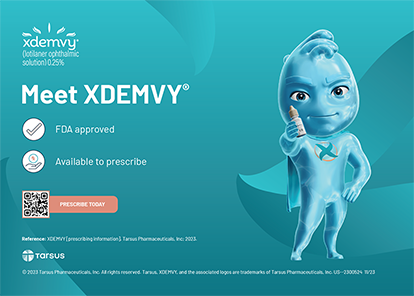MARK E. JOHNSTON, MD, FRCSC
The three primary concerns with any microkeratome are safety, results, and cost. My colleagues and I have used the IntraLase FS laser (Abbott Medical Optics Inc., Santa Ana, CA) in more than 1,000 cases and the Zyoptix XP microkeratome (Technolas Perfect Vision, Saint Louis, MO) in over 10,000 cases. Both procedures have been very safe. One incomplete flap occurred with the microkeratome, but we have rarely experienced slipped flaps, diffuse lamellar keratitis, or recurrent erosions with either procedure. The lower cost of the microkeratome, however, has given us a competitive advantage in maintaining our surgical caseload and referral base during the last year.
When we initially looked at the results of our IntraLase procedures, we compared them to a historically matched group of microkeratome procedures and noted similar outcomes. Based on this comparison, we recommended IntraLase to patients who required high corrections and had thin corneas. Clinically, we noted an increase in the number of enhancements we performed.
Using the Refractive Surgery Consultant (Refractive Consulting Group, Scottsdale, AZ), we found that patients with higher degrees of preoperative myopia (> 6.00 D) who underwent the IntraLase procedure experienced more myopic regression after surgery and a higher standard deviation than patients whose LASIK procedures we performed with the Zyoptix XP microkeratome. We reported these results in a poster presented at the 2009 ASCRS meeting.
Specifically, 87 eyes with greater than 6.00 D of myopia and less than 1.50 D of cylinder underwent VISX CustomVue wavefront-guided LASIK (Abbott Medical Optics Inc.). In the 50 eyes where we created the LASIK flap with the IntraLase, the mean spherical equivalence was -0.49 D with a standard deviation of 0.82, and 42% of the eyes achieved 20/20 vision (Figure 1A). In the 37 eyes where we created the flap with the Zyoptix XP microkeratome, the mean spherical equivalence was -0.14 D with a standard deviation of 0.57, and 68% of eyes achieved 20/20 vision (Figure 1B). The difference was statistically significant (P = .0286).
Based on our results, we no longer recommend that the LASIK flap be created with the IntraLase to patients with high myopia. Although we would expect their refractive results to improve with an adjustment of the nomogram, the number of enhancements required might still increase because of the higher standard deviation we observed. Safety remains the most important issue in LASIK, and we feel surgeons should use instruments with which they are the most comfortable. For us, that is a mechanical microkeratome.
Mark E. Johnston, MD, FRCSC, is the medical director and chief surgeon at Nebraska Laser Eye Associates in Omaha, Nebraska. He acknowledged no financial interest in the products or companies mentioned herein. Dr. Johnston may be reached at (402) 397-2010; johnston@nebraskaeye.com.
L. SHAWN WONG, MD
LASIK surgery is the primary procedure for refractive surgeons and will continue to be so for the foreseeable future, because it is, for the right candidate, 100% efficient. My success is determined by my LASIK outcomes, so I perform the procedure in the most effective way possible—with a modern microkeratome. I use the ML7 Microkeratome with the Calibrated LASIK Blade (Med-Logics, Inc., Laguna Hills, CA) (Figure 1). The ML7 Microkeratome offers unparalleled ease of use and versatility. I measure all of my flaps intraoperatively and tabulate the data to be certain that I am getting very tight tolerances for each flap. In every case, I can rapidly and reliably create thin, planar flaps with exquisitely smooth stromal beds (Figure 2). There is no worry of buttonholes or abrasions, and the hinge can be placed in any 360° position, even in small Asian eyes. Temporal hinges are my preferred position for flap safety and strength.
Although femtosecond lasers provide a sophisticated and novel way to create a flap, I decided against using the technology due to the difficulties of its use and the lack of advantage it offers in terms of outcomes. With the ML7 Microkeratome, first-day postoperative visual acuities of 20/20+ are normal and free of subconjunctival bruises and transient photophobia. The thin flaps preserve the stroma without concern for gas breakthrough or opaque bubble layers. Femtosecond lasers simply do not create a better flap than microkeratomes.
Finally, and practically, I prefer a mechanical microkeratome because of the excessive cost of operating with a femtosecond laser, for the patient and the surgeon. When I ask myself how I can create the best LASIK flap in terms of accuracy, reliability, safety, and patients’ outcomes, the answer is the ML7 Microkeratome.
L. Shawn Wong, MD, is in private practice at Eyes of Texas Laser Center in Austin. He acknowledged no financial interest in the products or company mentioned herein. Dr. Wong may be reached at (512) 345-5030; texas2020@austin.rr.com.


